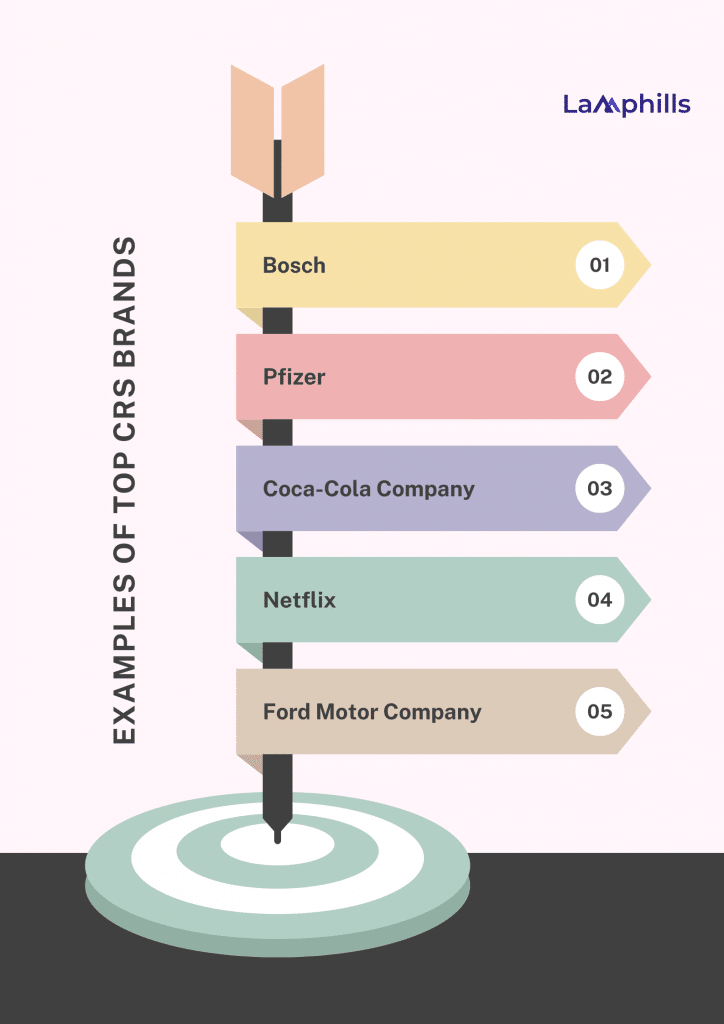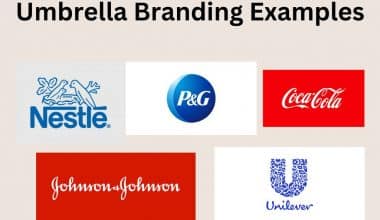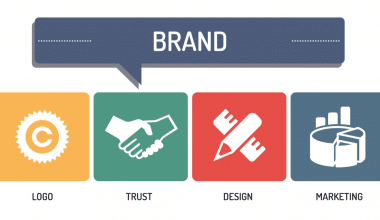Demonstrating sustainability efforts, prioritizing employee development and health programs, and funding diverse recruitment and management training programs that accommodate cultural variations are all becoming increasingly crucial for businesses. This is what corporate social responsibility is all about.
Simply put, corporate social responsibility, or CSR means building businesses that pledge to conduct themselves ethically and be socially responsible. The main priorities include investing in diversity initiatives, safeguarding the environment, and giving back to local communities. But how do you go about implementing this in your business like I have done for several businesses?
In this article, I will cover examples of the top 14 socially conscious brands to help you get a firm grasp of what this means and how to implement it. These businesses always demonstrate their dedication to social justice and equality through real-world projects that go above and beyond a press release or public statement.
Meanwhile, just in case you do not understand what a press release or public statement is, our article on understanding the Purpose of a Press Release carries you all the information you need.
Without further ado, let’s jump right in…
Key Takeaways
- Organizations’ approaches to corporate social responsibility (CSR) vary as different industries tackle different problems
- Customers are drawn to companies that promote diversity and equity in the workplace and community at large
- Organizations can lead their CSR strategy by clearly understanding the CSR criteria
- An organization that makes human resource investments values its workforce as a vital resource
What is Corporate Social Responsibility (CSR)?
Corporate social responsibility is the idea that firms should be responsible for their activities. This entails considering the environmental, ethical, and social consequences of their decisions for stakeholders within and outside their firm. Top CSR brands aim to foster a mutually beneficial relationship between corporations and society by holding companies accountable for any negative externalities they create.
Why is Social Responsibility Important?
Companies value social responsibility because of their power and ability to allocate resources broadly. Socially responsible businesses positively impact society in various ways, including donating to nonprofits, lowering carbon emissions, employing eco-friendly products, supporting diversity, and speaking out on human rights concerns. Furthermore, socially responsible businesses benefit from improved brand image, employee morale, and client retention, resulting in long-term profits.
As I earlier mentioned, I’ll cover some of the more well-known socially responsible businesses and their goals for improving the world. But let’s pump the brakes a bit and go over some major trends that influence CSR globally.
Trends in Top CRS Brands (Corporate Social Responsibility)
Trends in corporate social responsibility are influenced by things like shifting customer expectations and demographic preferences. Because Gen Z’s priorities may differ from Gen X’s, CSR expectations shift as Gen Z’s purchasing power rises.
After in-depth research, here are some top CSR trends that should influence your CSR strategy or decisions. I did this research myself and ran the numbers I do not want to bore you with. So just feel at ease…
#1. Openness
Customers want firms to engage in corporate social responsibility (CSR), and they also demand openness regarding the steps taken and reassurance that brands are keeping their word. Because consumers today aren’t scared to call brands out, it’s crucial to be mindful of this trend because it can backfire.
#2. Workers’ Welfare
Although employee welfare has long been a crucial component of corporate social responsibility (CSR), customers are becoming increasingly concerned with how well-treated the firms they support handle their workforce. In my recent research, I discovered that Outta The Gloss was founded by former workers to address racism and harmful working cultures. Customers who took part in their boycott calls provided them with great support.
#3. Information Security
Customers are more worried than ever about how businesses use their data, believing it to be a human right. Because of this, I’ve noticed a new trend in human rights and ethics: consumers want firms to have excellent data security procedures to safeguard their customer information.
#4. Inclusion, Equity, and Diversity (DEI)
Customers are drawn to companies that promote diversity and equity in the workplace and community at large. Customers want tangible results, such as assisting disadvantaged groups and eliminating gender pay disparities for internal staff.
Examples of Top CRS Brands
These examples of top CRS brands offer a concise and practical structure to assist your corporate social responsibility (CSR) initiatives and promote good change across your supply chain, regardless of size. Examine this infographic for reminder’s sake.

#1. Bosch
Bosch, a leading supplier of dependable, high-quality electronics as well as other solutions to assist sustainable development, supports climate neutrality. The company is dedicated to cutting upstream and downstream emissions in its supply chain.
From the perspective of electric vehicles (EVs), Bosch facilitates electrification by offering the industry scalable propulsion solutions with its electric drive systems.
In an effort to demonstrate the variety of approaches to corporate social responsibility (CSR), we’re examining some of the top companies for their innovative business development methods and dedication to sustainability.
Organizations’ approaches to corporate social responsibility (CSR) vary as different industries tackle different problems, but this helps us understand how the leaders in each sector are attempting to create a more sustainable future.
#2. Pfizer
Healthcare help is essential during times of crisis, and Pfizer meets its corporate social responsibility (CSR) goals by offering broad support through its three-pillar strategy. These pillars consist of grant money, contribution, and disaster relief.
#3. Coca-Cola Company
The company’s top priority is the environment, and one of its biggest changes will be to switch to 100% plant-based packaging. The company announced in 2021 that it would produce its first plant-based bottle, and since then, it has been improving the product and figuring out how it will work with the larger manufacturing process.
#4. Netflix
To foster relationships, Netflix, an on-demand streaming service, provides its employees 52 weeks of paid parental leave, which can be taken at any point throughout a child’s early years.
To put this in perspective, the typical technology company offers parents 18 weeks of paid leave during the maternity and paternity phases.
#5. Ford Motor Company
Ford Motor Company, one of the biggest automakers with roots in 1903, is dedicated to using electrification to “build a better world.” As part of its broader diversity, equality, and inclusion (DEI) strategy, pay equity is one of the primary employment strategies that Ford supports; it balances disparities in employee pay.
Meanwhile, just to ease up the stress of implementing one, here is an ethical supplier chain checklist.
The purpose of our Ethical Supplier Chain Checklist is to assist companies in assessing and raising the ethical bar in their supplier networks. This all-inclusive solution addresses every crucial facet of moral supply chain management, including continuous improvement, labour laws, health and safety procedures, environmental responsibilities, and supplier selection.
Ethical Supply Chain Checklist.pdf
#5. Loop
When it comes to auto insurance, Black folks in Black areas spend 70% more than those in upper-middle-class White neighborhoods. The AI-powered auto insurance startup Loop is aware of this disparity and is dedicated to improving the accessibility, affordability, and equity of auto insurance for individuals of color. One way that Loop plans to do this is by limiting its consideration to driving history.
#6. Alaffia
Togolese native Alaffia Olowo-no Tchala established the organization in 2003 to bring the nation out of poverty. Because all of its cosmetic items are manufactured by Togolese women, the neighbourhood benefits from job creation. Additionally, it collaborates with the Global Alliance for Community Empowerment (GACE) to provide health education and maternal care, build schoolhouses for children, and engage in fair trade for the people of Ghana and Togo.
#7. Parker Warby
Before purchasing, customers can try eyeglass frames at home with Warby Parker’s renowned at-home try-on program.
The Warby Parker Impact Foundation, which collaborates with local community organizations and nonprofits to provide access to vision care for adults and children who are generally underserved for this kind of treatment, is, in my opinion, a fantastic example of altruistic CSR.
With the help of its Buy a Pair, Give a Pair initiative, which has given out over 15 million pairs of glasses to date, one pair is donated for every pair purchased.
#8. IKEA
IKEA is committed to environmental sustainability. It aims to use exclusively sustainable materials and recycled or renewable plastic by 2030. The IKEA Foundation also finances environmental initiatives worldwide, such as renewable energy projects, and collaborates with non-governmental organizations to provide employment and entrepreneurship programs.
Here is an Environmental Impact Checklist to help you get started on implementing one just in case this sounds like music to you.
Environmental Impact Checklist.pdf
#9. Patagonia
Patagonia is well-known for its environmentalist initiatives, such as financially supporting grassroots campaigners. Through its Worn Wear program, customers are encouraged to return their used Patagonia clothing to the company so that it can be refurbished and resold rather than thrown away. On the other hand, Patagonia Provisions produces and markets organic foods that guarantee healthy soil, are grown with ethical labor practices, and treat animals fairly and humanely.
#10. Cora
In addition to selling organic personal care goods, Cora gives items and body literacy information to groups frequently disregarded in related debates with each purchase. It currently donates 75% of its proceeds to BIPOC-serving groups and has diverted 14,000 products from landfills while also giving away 24,000,000 products.
#11. Allbirds
Allbirds is a footwear and apparel company that demonstrates its dedication to sustainability and environmentalism by using natural, renewable, and sustainable materials to manufacture its goods.
The Allbirds Flight Plan outlines the company’s environmental goals, which include investing in renewable energy, regenerative agriculture, and responsible energy use to reduce its carbon footprint by half by 2025. As of 2024, it is 60% of the way to achieving its 2025 target.
#12. Apple
Since 2020, Apple’s corporate operations have operated carbon neutrally. By 2030, they want to produce all of their goods using carbon neutrality, green chemistry, and recycling rather than removing resources from the environment.
Apple has contributed to the Malala Fund in an effort to empower and educate girls. Since 2018, they have contributed money supporting research, technology, curriculum, and Malala student awards as a Laureate partner.
#13. Alaska Airlines
Alaska Airlines aspires to build a sustainable future for both themselves and their clients. Being the most fuel-efficient airline in the United States and aiming to achieve net-zero carbon emissions by 2040 are two ways they’re going about this. Alaska Airlines has had an impact by removing plastic waste from onboard services and promoting the use of reusable water bottles.
Alaska Airlines’ customers and staff are part of a sustainable future. The organization prioritizes diversity and equal opportunity, employee and passenger safety, and community giving to address these people. More than $750,000 has been donated by Alaska Airlines to forty-one nonprofit organizations in Alaska, Hawaii, and the West Coast that promote fairness and education.
#14. Microsoft
Microsoft’s CSR brand programs enhance employability, skill sets, and environmental sustainability.
They collaborate with schools, companies, and nonprofits to enhance computer science education and have a bigger technological impact through Microsoft Philanthropies. They also support groups that work to raise Washingtonians’ standard of living.
Employees also contribute to local charities because employee giving is deeply ingrained in Microsoft’s office culture. They provide organizations with volunteer labor and expertise in addition to donations. Microsoft matches its employees’ contributions, both monetary and in kind.
Types of Top CSR Brands
Corporate social responsibility, or CSR brands, is the practice of businesses caring about the environment and society in addition to their financial performance and profits. Businesses make choices that, through deliberate actions and procedures, have a beneficial environmental impact.
Environmental, charitable, human rights, ethical, and economic are the four primary types of CSR.
#1. Accountability for the Environment
Businesses that support environmentally friendly actions, such as ensuring tangible goods are made responsibly or using sustainable materials, offsetting harmful emissions, and utilizing renewable energy, engage in environmental corporate social responsibility (CSR).
#2. Human Rights and Moral Obligation
Human rights and ethical corporate social responsibility (CSR brands) encompass actions that uphold human rights, like treating all parties engaged in the business fairly (suppliers, customers, etc.) and adhering to fair trade norms, such as using production techniques free from child labor and slavery.
#3. Accountability for the Economy
Economic CSR integrates the three categories I listed earlier. A brand’s financial investments should align with its human rights, sustainability, and philanthropy commitments. For instance, spending would demonstrate a brand’s commitment to ecology if it stated that it is attempting to offset its carbon footprint.
#4. Social Duty
Giving to charities, collaborating with them, or even establishing distinct charitable divisions inside a company are all examples of philanthropic corporate social responsibility (CSR). The overarching objective of this kind of CSR is to improve the local community and the wider environment.
#5. International Accion
Accion International aims to create a society where everyone can access financial resources by giving economic opportunity to populations frequently disregarded and excluded from financial discussions.
It offers financial support to low-income women and entrepreneurs of colour, as well as business networks, coaching, and instructional materials that might be useful for starting and expanding a firm. Since its creation, it has reached over 350 million individuals worldwide.
#6. Reverse Market
Back Market sells refurbished electronics to consumers to reduce the waste electronic devices produce. The company offers an environmentally responsible substitute for individuals wishing to purchase gadgets, encouraging customers to trade their old devices for cash rather than discarding them.
Standards for Assessing Companies Top CSR Brands
There is more to assessing the effectiveness of CSR programs than just checking a box. It’s important to comprehend how the organization affects the environment, communities, and society. Organizations can lead their CSR strategy by clearly understanding the CSR criteria. Let’s examine these criteria in more detail to see how we might quantify the impact of an organization’s CSR efforts. Any business can measure its influence and operations by measuring corporate social responsibility. What CSR standards should we concentrate on to ascertain whether a company is truly implementing its CSR strategy?
#1. Participation in the Community
A real leader in CSR is a community member. One important metric for assessing the success of corporate social responsibility is community relations. It examines how a business gives back to the community through philanthropic contributions, volunteer work, and alliances with neighborhood groups. It’s involvement, not just writing checks. Businesses that succeed in this area have cultivated long-lasting connections with pertinent community organizations and have positively impacted the community through their initiatives.
#2. How to Assess CSR Correctly
Examine CSR reports from the company and external evaluations. Are the objectives specified and quantifiable? Examine the accolades and qualifications obtained from reliable sources. Do local community members, staff members, and consumers participate in the goal-setting process to show that the company is having an impact? Use the balanced scorecard approach to understand the organization’s approach to corporate social responsibility. Take into account the financial, social, and environmental performance.
#3. Accountability and Transparency
Accountability and transparency are essential components of any CSR program. You must be able to assess a company’s transparency in its CSR efforts. Do they disclose their objectives to everyone, including their successes and failures? A CSR leader isn’t afraid to share their accomplishments and areas for growth. They openly provide comprehensive reporting and independent audits to demonstrate their veracity, integrity, and openness.
#4. Workplace Well-Being
In summary, a company’s CSR can be largely determined by how it handles its people. Do they provide possibilities for growth, safe working conditions, and compensation commensurate with the market? Do they use DEI policies and encourage work-life balance? Whether the company funds programs for health and wellness and staff development depends on these variables. An organization that makes human resource investments values its workforce as a vital resource.
#5. Impact on the Environment
The environmental impact of the business is covered by a sizable component of CSR guidelines. This way, it discusses how the company might enhance sustainability initiatives and reduce its carbon footprint. A company’s CSR responsibility includes ensuring it has plans and objectives for lessening its environmental effects. They invest in environmentally friendly technology and strive to become carbon neutral by using less energy. Energy use, efforts to rationalize waste treatment, and the degree to which supply chains are working toward sustainability are all used as evaluation indicators.
#6. Establish Business Procedures
Determining the proportion of company activities that incorporate ethical operations is essential for developing a leading position in CSR. It indicates that the company places a high importance on upholding sound corporate governance, treating clients and suppliers fairly, and conducting business with integrity. CSR executives advocate for pro-ethical behaviour, adherence to local rules and regulations, and a strong stance against corruption. They establish a culture of honesty that values every worker in the company.
What is a CSR brand?
A corporate social responsibility (CSR) brand or firm adheres to the “corporate social responsibility” business model, which holds companies responsible for improving the environment and society. Companies that engage in CSR can enhance society and enhance their reputation.
What company has the best CSR Brands?
Microsoft, a longtime pioneer in corporate social responsibility, leverages its technology to benefit people and communities worldwide. In 2022, Microsoft workers volunteered over 720,000 hours and gave $255 million to more than 32,000 nonprofit organizations. Microsoft has also committed to becoming carbon neutral by 2030 and has promised to invest $1 billion in accelerating climate initiatives.
Conclusion
The top ten socially conscious brands serve as examples of the value of CSR and the good societal effects that companies may have.
Establish a plan to find CSR partners who will fit your company well. Organize the strategy to resemble a huge donor drive or extensive fundraising effort. A strong narrative approach would benefit any advertising!
References
- What Is Relationship Marketing? All You Need To Know
- A Breakdown of Brand Sentiment: Analysis, Tools, Metrics and Best Practices for 2024
- 5 Mind-Blowing Brand Activism Campaigns That Changed the World (You Won’t Believe #3!)
- Social Signals: Elevating Your Brand’s Digital Footprint
- 15+ Public Relations Tools That Work: A Personal Guide to Enhancing Your PR Strategy






